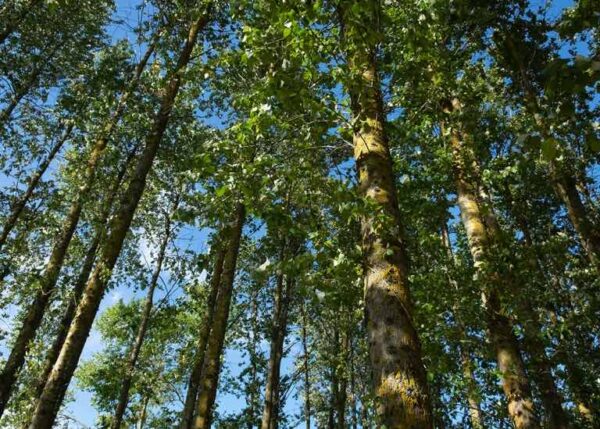Researchers at Stockholm University and the Swedish University of Agricultural Sciences have developed a novel value chain for production of textile and bio-fuel from fast-growing poplars. By applying sustainable catalysis on these poplars grown on marginal land in Nordic climates, the demand for cotton can be reduced. Consequently, considerable areas of productive agricultural land can be converted from cotton to food production.
Even though cotton is a biomaterial, the cultivation of cotton is not sustainable. The Aral Sea that disappeared within a few decades is a tragic yet illustrative case of the immense water demand for cultivating cotton. In contrast, in rain fed Nordic landscapes textile fibre is produced without irrigation.
Novel poplar trees
SLU, the Swedish University of Agricultural Sciences, developed novel poplar clones that have superior growth on marginal land on northern latitudes. These poplars reach full growth within 20 years, as compared to 50-100 years for current forestry trees.
Anneli Adler, researcher at SLU, and the first author of an article published in the scientific journal Joule says:
“I named these clones SnowTiger as they grow fast in short rotations in northern climates. They are ´The Nordic Eucalypts´.”
Joseph Samec, Professor of Organic Chemistry at Stockholm University and the main corresponding author of the article says:
“The whole tree is converted to high value products where the cellulose becomes textile fibre while the hemicellulose and lignin are transformed to an advanced biofuel. This is noteworthy as less than 50 percent of wood is refined to textile fibre with current pulping technologies, while the rest is burnt to a low value.”
And he continues:
“This is a highly interdisciplinary study involving several institutes that demonstrate the Nordic region’s ability to contribute to global food security and irrigation challenges.”
Read the paper: Joule
Article source: Stockholm University
Image: Harvesting mature poplar 26 years after planting in Southern Sweden near Lake Vombsjön. Credit: Almir Karacic






